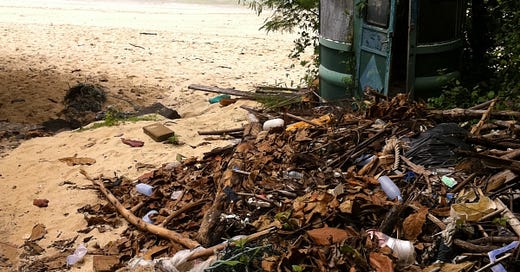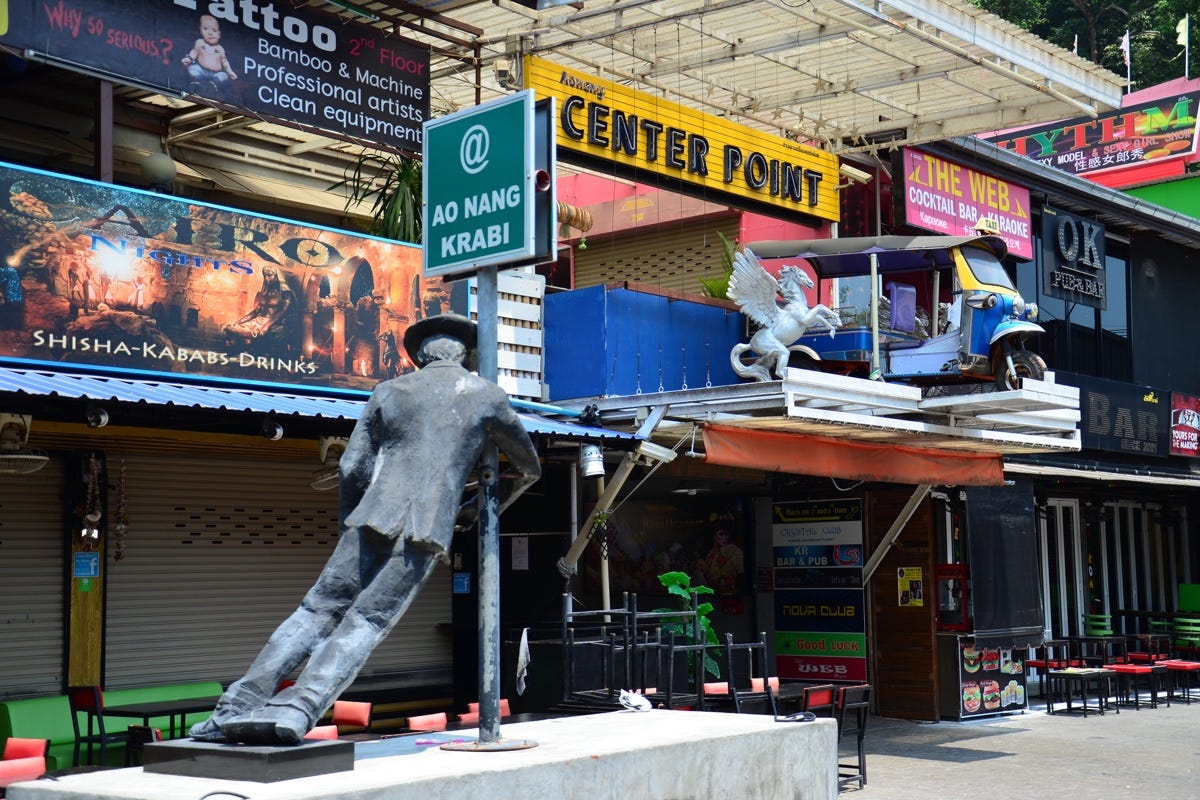Dear reader, I’d like you to cast your mind back a few years—to 1993 to be exact. By chance, that year was the first time I visited Thailand, but that isn’t why I’m highlighting it. In that year the Environmental Conservation Section of the Tourist Authority of Thailand (TAT) sent a memo to the government. The title was “An Outline of Problems and Remedies of Tourism Impact on the Environment”. It makes for a rather interesting read.
I can’t find the inbound tourism figures for 1993. The earliest figures I could find were out of the 7th edition of Lonely Planet Thailand by Joe Cummings. Published in 1997, it gives the total number of inbound tourists for 1995 as being 4.2 million. To put that in perspective, that is a little over ten per cent of the number who visited the country in 2019.
Four million tourists are still a fair number of people, but it seems certain people within the TAT’s Environmental Conservation Section were already concerned. So concerned in fact, they wrote a memo.
Didn’t you get the memo? Ko Phi Phi Leh. Photo: Stuart McDonald.
I came across a reference to the memo last night in a text I’m reading for school: Taking Responsibility for Tourism: Responsible Tourism Management by Harold Goodwin. In it (on page 152), he references a TAT that reported a “disturbing litany of adverse impacts.” I had to know more.
Six aneurysms later (I’m really struggling with online libraries) I found the source text. Titled Managing Tourism Growth: Issues and applications by Fred Bosselman, he referred to the following memo on page eight and nine. Unfortunately, I couldn’t find the original TAT memo and while he’s paraphrasing here, his summary makes for a prescient read.
Here we go:
The TAT memorandum very pointedly categorized the negative impacts brought upon by unchecked tourism in Thailand.
1. Deterioration of tourist destinations and pollution
Visitor sites became dirty and degraded. Pollution in many forms abounded: water degradation, discolored beaches, and stench from garbage and traffic, all of which were “injurious to the visitors’ health and induced psychological distress and displeasure to them. Tourists left with a negative impression and had no wish to make a repeat visit.”
2. Encroachment on public land
Commercial tourism development was located on public mountains, islands, beaches, and forests without valid legal title or permission. Additionally, some developers improperly expanded existing tourism uses onto adjoining public lands.
3. Buildings and structures
Scenic integrity and quality were compromised by illegal building that did not comply with code requirements as to height, quality, and open space, particularly around two popular beach regions and one culturally attractive city in the north. Some buildings were illegally and insensitively sited in locations where they were out of scale and disfigured the natural contours and features of the land. Additionally, building had “mushroomed in complete chaos, resulting in a jumbled sea of eyesores”; examples included beer bars in the previously peaceful beach areas of Phuket and Ko Samui, as well as shopping stalls and arcades next to Chiang Mai temples and archeological sites.
4. Development of infrastructure and facilities without regard to the environment.
This set of problems involved improper filling of waterways, roads constructed too close to the coastline or through mangrove forests, and soil disturbances (e.g., excavation) causing subsidences and silt accumulations to the detriment of natural ecosystems and geography.
5. Commercial sex
Tourism growth triggered substantial increases in this industry, even though “it has been with the Thai society for a long time.” The increase in such activities brought with it disease (e.g., STD and AIDS), drug use, crime, and child prostitution.
6. Crime
Urban communities experienced increasing crime against tourists.
7. Unequal emphasis on area development
Improvements to infrastructure and facilities, such as electricity and roads, were provided to tourist hubs rather than to nontourist locations.
8. Other negative impacts
There were a number of other problem areas related to or caused by unmanaged tourism growth: unfair exploitation of tourists (e.g., extortion and unconscionably high prices); manipulation of traditional culture (e.g., neglecting the “intimate meaning” of cultural elements and instead presenting the culture in “outward, dazzling display and performance”; decline in the quality of artifacts and handicrafts; and occasional hostility between tourists and the local population where tourists behaved in ways that are offensive to residents.
The memo was written in 1993, but it could just as easily have been written in 2019—26 years later. It seems nothing, nothing whatsoever, has been learned. Many of the points outlined above are not new—what is noteworthy is that they were highlighted by the tourism board of Thailand.
When your tourism plans are fall-down drunk. Ao Nang. Photo: David Luekens.
I did some searching online to try and find the TAT’s Environmental Conservation Section but as far as I could tell it no longer exists.
That’s one way to make the problem go away I guess.
Couchfish is 100 per cent independent and reader-supported. If you’re not already a subscriber, and you’d like to show your support, become a paying subscriber today for just US$7 per month—you can find out more about Couchfish here—or simply share this story with a friend. Thank you!















Share this post